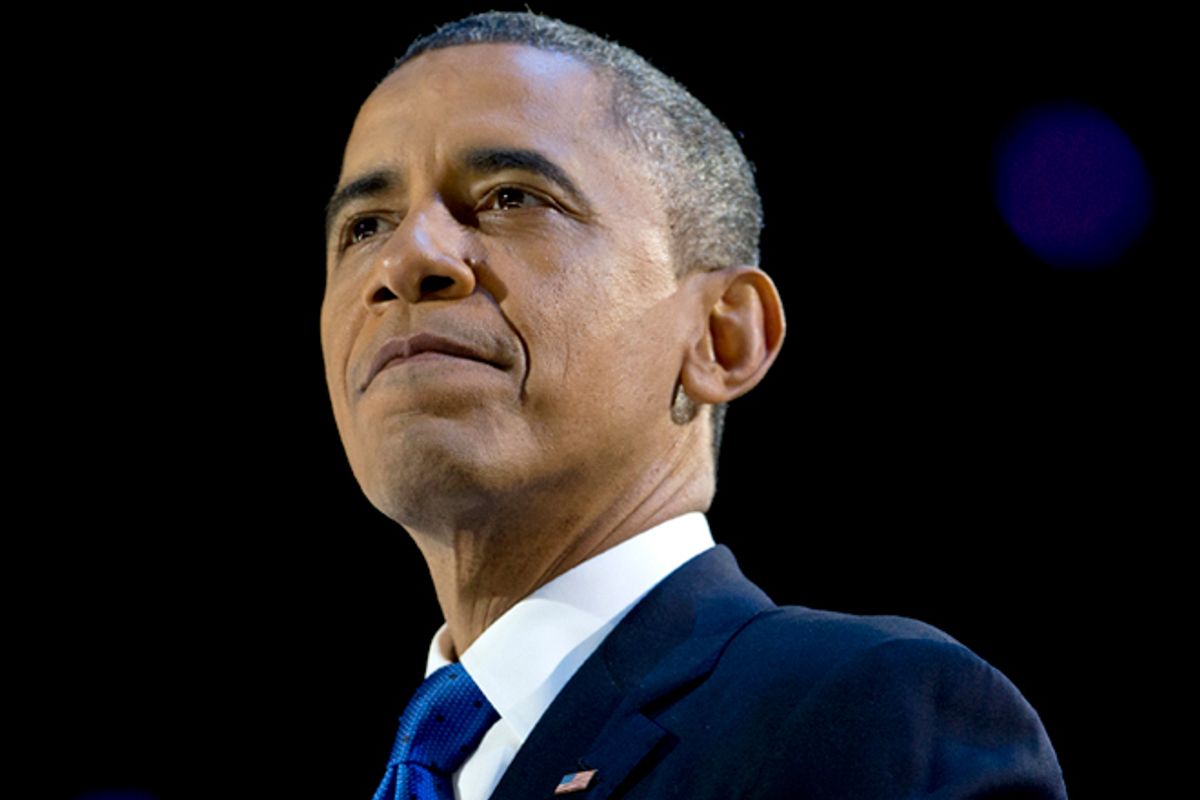 Included in President Obama’s plan for reducing gun violence is an idea made famous, or infamous, by the National Rifle Association in its press conference following the massacre in Newtown, Connecticut. After railing against violence in movies and video games, NRA spokesperson Wayne LaPierre called on Congress “to act immediately to appropriate whatever is necessary to put armed police officers in every single school in this nation.”
Included in President Obama’s plan for reducing gun violence is an idea made famous, or infamous, by the National Rifle Association in its press conference following the massacre in Newtown, Connecticut. After railing against violence in movies and video games, NRA spokesperson Wayne LaPierre called on Congress “to act immediately to appropriate whatever is necessary to put armed police officers in every single school in this nation.”
Obama’s plan isn’t as dramatic or far-reaching, but it is a variation on the same idea. His executive action on guns calls for federal agencies to “provide incentives for schools to hire school resource officers.” This includes mental-health professionals, guidance counselors, and police officers or other security officials.
Schools with more police might be safer from violence, but there are also unintended consequences to exposing students to law enforcement. “With the increase of police in schools, we’ve seen a dramatic increase in school-based student arrests, particularly of youth of color,” writes Judith Browne Dianis, co-director of the Advancement Project, a civil-rights group. “Instead of addressing infrequent, serious threats to safety, police officers in schools often respond to minor student misbehavior by handcuffing, arresting, and criminalizing the very young people they are intended to protect.”
“Criminalizing” is the key word here; police aren’t arresting students for illegal behavior as much as they are detaining them for breaking rules and violating codes of conduct. In one Mississippi school district, according to a recent report prepared by the Advancement Project, 33 of every 1,000 children were either arrested or referred to juvenile detention centers. Only 4 percent of law enforcement referrals were for felony-level behavior; the vast majority were for “disorderly conduct.” What does that entail? One child was taken home by the police for wearing shoes that violated the school's dress code, while another was removed for not wearing a belt.
Overall, the number of students who are suspended or expelled nationwide has been on the increase for the last decade. According to the most recent data from the Department of Education’s Office for Civil Rights, more than 3 million students are suspended each year and over 100,000 are expelled. Indeed, public- school discipline rates in the United States have never been higher. In Texas, more than half of students had been suspended or expelled between the 7th and 12th grades. Of those, 15 percent had seen disciplinary action more than 11 times, and of those, almost half had previous contact with the juvenile justice system.
This “school-to-prison” pipeline, as it's called, has the greatest impact on students of color. In a 2011 study called Race is Not Neutral, researcher Russell Skiba reviewed the disciplinary data of more than 400 elementary schools around the country and found that African American and Latino students received harsher punishments for similar misbehavior than their white peers. They’re more likely to be punished for offenses such as “disrespect or ”misconduct." And they’re dramatically more likely to be removed from school: Three times more black students are suspended and 3.5 times more are expelled. Latino students are suspended at 1.5 times the rate of white students and expelled twice as often. The Coalition for Juvenile Justice finds that African American youth are 1.4 times—and Latinos 1.5 times—more likely to be detained than their white counterparts.
The school-to-prison pipeline operates directly and indirectly, and it’s not hard to find examples of the former. In one Arizona town, local law enforcement works with private prison employees and immigration officials to conduct drug sweeps of public schools. In one such operation, three students were arrested for marijuana possession and referred to the juvenile court system. One of the students, who was found with 10 ounces of marijuana, could be prosecuted for intent to distribute, a felony that could haunt her for the rest of her life, to say nothing of the possible prison sentence.
None of this is to say that the Obama administration plans to arrest children. In fact, Dianis notes that the White House is attentive to these concerns, “One thing the administration is looking at doing is figuring out what kind of restrictions and requirements to put into the cop-in-schools program," she says, "so that they can reduce the chances of those unintended consequences.” One such requirement is a push for transparency: Schools will have to report arrests to the Office for Civil Rights in the Department of Education, and will have to detail the arresting offense. The first step toward dealing with the problem, after all, is knowing that it exists.
Still, if the White House truly is attuned to the pipeline, then it should reconsider this proposal to bring more police and law enforcement into schools. Given the number of states that are pushing require more security in schools, restricting new federal funding to counselors and mental health professionals might be a better bet for solving actual student problems.
Kids are already being criminalized at a high rate, thanks to well-meaning policies aimed at “safety.” For all its good intentions, the White House’s new measure might make the problem worse.

Shares